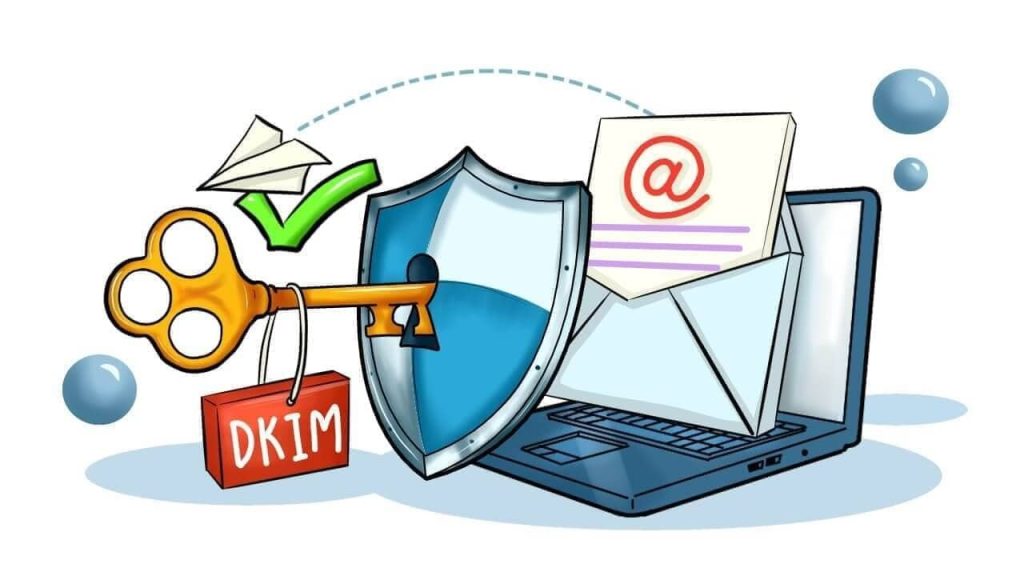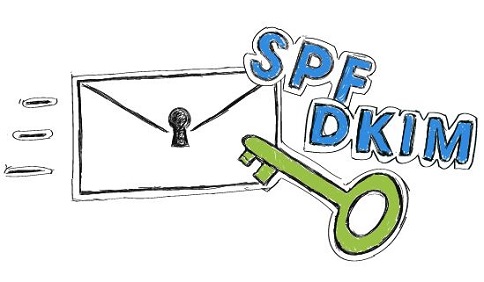SPF (Sender Policy Framework) and DKIM (DomainKeys Identified Mail) are two important email authentication mechanisms used in hosting environments to combat email spoofing, phishing, and spam. They work in conjunction to verify the authenticity of email messages and ensure that they are delivered securely. Let’s delve deeper into each of these protocols and their significance in hosting environments:
SPF (Sender Policy Framework):
Overview:
SPF is an email authentication protocol that helps verify the authenticity of the sender’s domain by allowing domain owners to specify which mail servers are authorized to send emails on behalf of their domain.
Spam filters are the most aggressive barrier to getting high email deliverability. However, when you have an SPF setup, there is one less reason for the spam filters why they should block you. This reflects decently into your email reputation, brand preservation, and trust enhancement, strengthening your email deliverability.
How SPF Works:
- DNS Records: The domain owner publishes SPF records in their DNS (Domain Name System) configuration.
- Email Sending: When an email is sent from a domain, the receiving mail server checks the SPF record of the sender’s domain.
- SPF Evaluation: The receiving server compares the IP address of the sending server with the list of authorized IP addresses specified in the SPF record.
- Action: Based on the SPF evaluation, the receiving server can determine whether to accept, reject, or flag the email as suspicious.

Significance:
- Prevents Spoofing: SPF helps prevent email spoofing by allowing receiving servers to verify the authenticity of the sender’s domain.
- Reduces Spam: By rejecting emails from unauthorized servers, SPF helps reduce the likelihood of spam and phishing attacks.
- Improves Deliverability: Properly configured SPF records can improve email deliverability and ensure that legitimate emails reach recipients’ inboxes.
DKIM (DomainKeys Identified Mail):
Overview:
DKIM is another email authentication protocol that adds a digital signature to outgoing emails, allowing receiving servers to verify the authenticity of the message and ensure that it has not been tampered with during transit.
DKIM is the next step in authenticating your identity, directly impacting your email deliverability. If you’ve both SPF and DKIM, DNS ensures that the sender has sent emails from the listed server and the message is sent from the original sender.

How DKIM Works:
- Digital Signature: The sender’s email server adds a unique DKIM signature to outgoing emails.
- DNS Records: The sender publishes a public DKIM key in their DNS configuration.
- Email Reception: When the email is received, the receiving mail server retrieves the sender’s DKIM public key from the DNS.
- Signature Verification: The receiving server verifies the DKIM signature using the public key and checks for signs of tampering.
- Authentication: If the DKIM signature is valid, the email is considered authentic and is delivered to the recipient’s inbox.
Significance:
- Message Integrity: DKIM ensures that the content of the email has not been altered or tampered with during transmission.
- Authentication: By verifying the DKIM signature, receiving servers can authenticate the sender’s domain and reduce the risk of phishing and spoofing.
- Reputation Management: Proper DKIM implementation can enhance the reputation of the sender’s domain and improve email deliverability.
SPF vs. DKIM:
Complementary Protocols:
SPF and DKIM are complementary email authentication protocols that work together to provide comprehensive protection against email spoofing and phishing attacks.

Combined Protection:
- SPF: Protects against domain spoofing by verifying the sending server’s IP address.
- DKIM: Ensures message integrity and authenticity by adding a digital signature to outgoing emails.
Enhanced Security:
Implementing both SPF and DKIM provides enhanced security for email communication, reduces the risk of malicious activities, and improves overall email deliverability.
Conclusion:
In summary, SPF and DKIM are essential email authentication protocols used in hosting environments to verify the authenticity of email messages, prevent spoofing, and enhance security. By implementing SPF and DKIM records in DNS configurations, domain owners can protect their email infrastructure, reduce the risk of phishing attacks, and ensure the delivery of legitimate emails. These protocols play a crucial role in maintaining trust and integrity in email communication, ultimately contributing to a safer and more reliable online environment.
